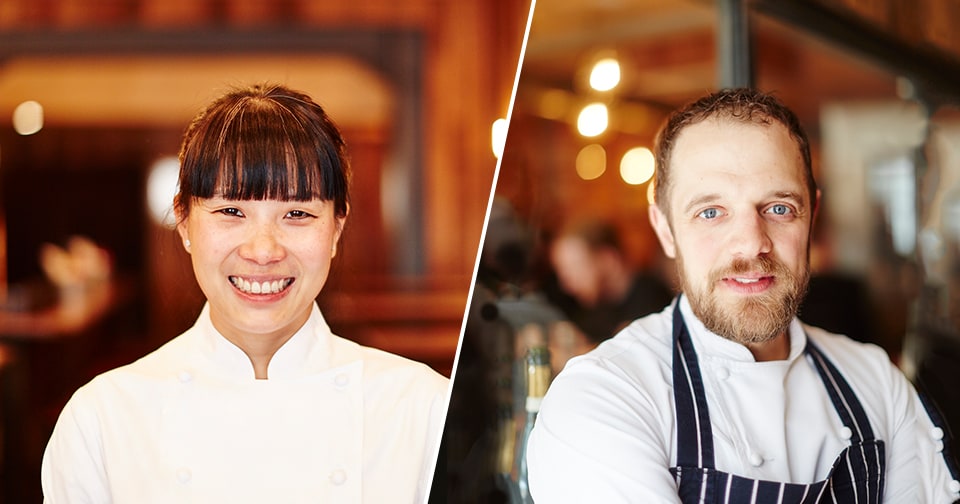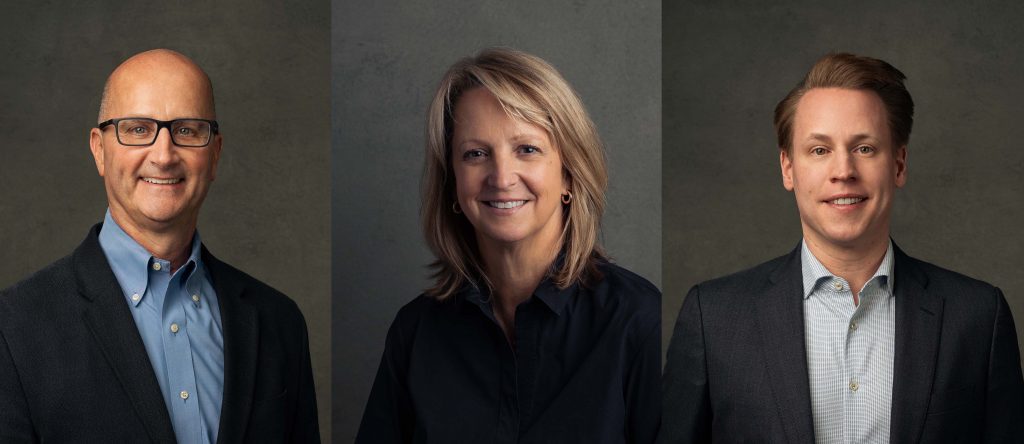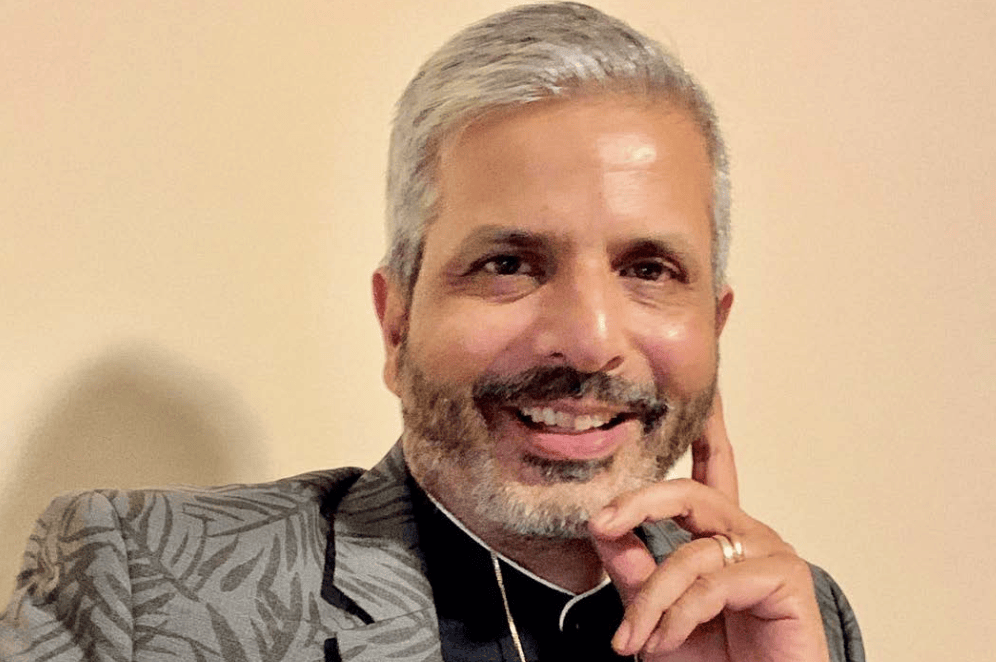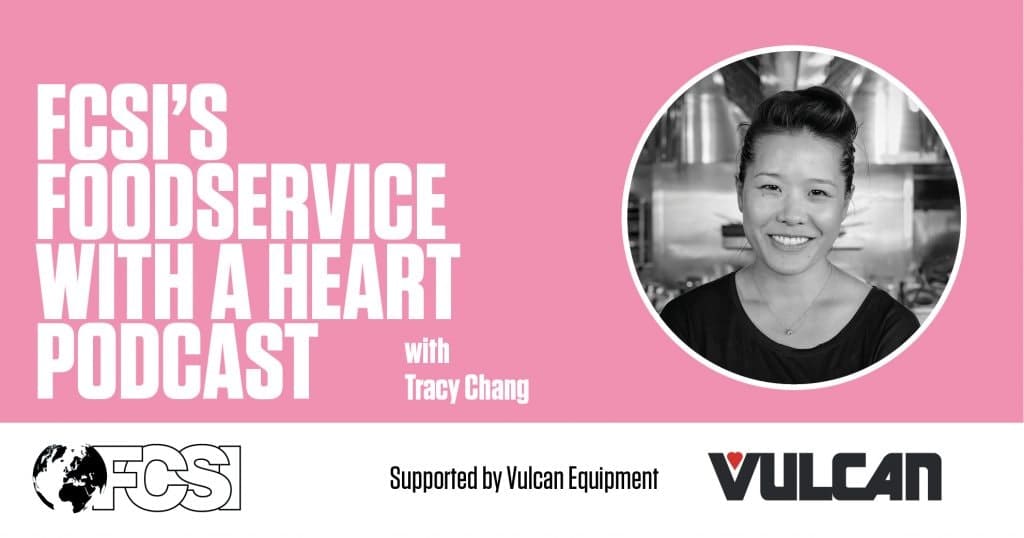
When James Knappett’s name was called out as a new two-star restaurant at the launch of the 2019 Michelin Guide UK & Ireland there may have been a few surprised people in the audience. Not because the food at his restaurant, Kitchen Table at Bubbledogs, is not worthy of the status, but because the restaurant isn’t on everybody’s radar. Knappett, by his own admission, likes to keep his head down and get on with the job. “Yeah? Good,” he says when I suggest he keeps a low profile. “I don’t kiss anyone’s arse”.
It is a safe bet that the Suffolk-born chef is rarely lost for words, but descending the stairs to pick up his second star, Knappett was obviously overwhelmed and motioned for his wife and business partner Sandia Chang to join him on the stage.
It seemed appropriate for the two to receive the accolade together; in a world of big chef personalities they have been a genuine team since they met while working at Per Se in New York City. Today Knappett heads up the kitchen while Chang is sommelier and general manager.
“There’s a system. I am always right and you are very good at accepting when you are wrong,” says Knappett to Chang when discussing their partnership.
Joking aside, in a tough industry like hospitality working with your partner is not for everyone. Rebecca Burr, editor of the Michelin Guide Great Britain & Ireland, says the two pull it off brilliantly. “James has perfected those dishes and moved them into a whole different league and Sandia is right by his side; they are proof that you can have that level of achievement and a work/life balance too,” she says.
Drive and ambition
It was fitting that Gordon Ramsay, the man Knappett credits with his interest in becoming a chef and his first real mentor, was there to deliver the traditional Michelin chef’s jacket. Knappett’s move to the British capital in 1999 came shortly after he had discovered Boiling Point, the TV programme that charted Ramsay’s rise to the top. “That just  showed you what drive is. I don’t know if I would be anywhere near London today if I hadn’t watched Boiling Point,” he says. “I saw a man with so much drive and ambition and nothing was going to stop him. If that hadn’t happened I might have been cooking in my village today.
showed you what drive is. I don’t know if I would be anywhere near London today if I hadn’t watched Boiling Point,” he says. “I saw a man with so much drive and ambition and nothing was going to stop him. If that hadn’t happened I might have been cooking in my village today.
For the 17-year-old aspiring chef, the reality was a rude awakening. “When I got to London I thought, ‘I want to be Gordon Ramsay’, but I quickly realised that thekitchen was tough, this was a man’s world,” he says. “Kitchens like that don’t exist now, I think everyone would be in prison – and I am not referring to Gordon, but the kitchen teams.”
Knappett arrived in London as Ramsay’s eponymous Royal Hospital Road restaurant was in pursuit of a third Michelin star. “It was on this crazy mission to get three stars, which it obviously did. It was a special time to be there to actually see Ramsay cook on the stove,” he explains.
But he found it hard to deal with life in London and after six months made the move down to Cornwall where he ended up spending three years in Rick Stein’s seafood restaurant. The lure of the capital eventually drew him back – at the time, in the early 2000s, people thought if you’re not cooking in London you’re not cooking at all. “If you weren’t in the kitchens of Gordon Ramsay, Tom Aikens, Marco Pierre White or Nico Ladenis you may as well choose another career,” says Knappett.
So he returned to London where he spent five years with Marcus Wareing at Petrus, also in the Gordon Ramsay Group, and worked his way through the ranks, “from not having a name to going all the way to being a head chef at one point”.
Next, after “a powerful call from Ramsay” came a trip across the Atlantic to join the kitchen team at Thomas Keller’s newly opened Per Se restaurant, at the time among the most talked about restaurants in the world. Though he spent just a few years working with Keller the American chef remains the biggest inspiration in his career – he says three quarters of what he does now comes from what he learnt from Keller. “Before I got to New York I thought it was all about screaming, shouting, long hours, sacrifice and hating anything outside the cooking world,” he says. “Then I got to Keller and I realised this guy is a gentleman, he’s kind, caring and team is everything. We went into a different dimension of cooking.”
Keller, he says, taught him everything – from the importance of staff meals to how clean a kitchen should be, how to dress and precision in plating. “He taught me to think ‘don’t just do that because we can, think how we can make it better’,” he says.
From the kitchen to the dining room
It was at Per Se that he met Chang and the partnership between the two was born when she joined Per Se as a kitchen runner. Born in Los Angeles, Chang is chef trained but made a transition to front of house after finding the kitchen tough.
“I wanted to be in the hospitality industry since I was a little girl,” she says. “When other girls wanted to be princesses I wanted to be a waitress.” After studying hospitality management at university she decided to become a chef – this was the time when Jamie Oliver emerged and Emeril Lagasse was ever present on TV and the chef profession became impossibly glamorous – and went to the Culinary Institute of America in Napa Valley. Next, following everybody’s advice, she packed her bags and knives and headed to New York City where she landed a job at Bouley, a Tribeca restaurant.
“I quickly realised that this was not Jamie Oliver or Emeril Lagasse, it was brutal,” she says. “We worked six days a week, you started at 11am and finished at 1 the next morning. On the only day off you were either sleeping or doing laundry and you were getting paid nothing. It wasn’t for me.”
The love for the industry remained, and as this was around the time Keller opened Per Se and was hiring she decided to make the switch to front of house. “They were looking for food servers and it was a perfect transition job for me; essentially you take the food from the kitchen to the guest and explain the dish,” she says. She had no experience of actually waiting tables but quickly hit her stride and ended up spending four years at Per Se working her way up to maître d’ of private events.
By this time the two had married and Knappett had tried and failed to get his green card. Keller had offered him a three-year contract to stay in the city, but he was reluctant to spend another three years in the same kitchen, so he moved on to another pressure cooker. Noma in Copenhagen was yet to be anointed the best in the world and, as Knappett puts it, was still doing meal deals in the newspaper because they couldn’t get customers through the door. Chef René Redzepi was cooking every day. “I doubt I will ever see it happen again, but it went from being an unknown restaurant to this popular destination restaurant in the two years I was there,” he says.
When Knappett left for Copenhagen Chang stayed in New York. “I was at the height of my career at Per Se, I have never made so much money in my life,” she says. “The connections I’d made in New York City were great, everywhere I went people knew me, so I stayed on for another year before joining James at Noma.”
Chang was the first non-Scandinavian waiter when she joined the front of house team at Noma. The pair quickly had to get their heads round a different approach to the profession while working with Redzepi.
“Nordic cuisine didn’t even exist then, René created it. He was a bit of a fireball and so different – how he looked at food and turned everything upside down. He probably has the best palate I have ever worked with,” says Knappett. “He showed me how to make delicious sauces without salt; before that it was like salt, salt, salt – chefs love salt.”
From Chang’s point of view it showed her a new approach to hospitality. “For Thomas Keller it was all about exceeding guests’ expectations, we’d never say no to a guest. With René, if a guest asked for, say, a pork chop to be cooked well done he’d say no. He wouldn’t compromise a good piece of meat,” she explains. “It was a different sort of hospitality – they can say no to a guest but in a hospitable and warm way.”
The two returned to the UK after Noma and both joined Marcus Wareing’s team before eventually opening their own place.
Hot dogs and fine dining
Unable to agree on the concept, they decided to open two restaurants at the same time: at the front of the building is Bubbledogs, Chang’s idea of a hot-dog restaurant serving small grower champagnes. Walking to the back of the room and passing through the curtain takes you to Knappett’s baby, Kitchen Table, a fine-dining space seating just 20 people. Doing one of those separately, let alone both simultaneously, would have represented a challenge, but the two pulled off this double feat with great success. Bubbledogs had a two-hour line around the block every day for the first year – and the concept wasn’t exactly well received prior to opening. A PR mishap meant the news that the chef who had been trained in the best kitchens in the world was opening a hot dog joint was released two months early. “There was huge pressure on us; we spent two months reading about how we were going to fail,” says Knappett. “As it happened it was over two years before we did fewer than 200 guests a day.”
Chang acknowledges that opening the two together was tough, and learning to cook hot dogs was just the start. “Kitchen Table is our familiar playground, it is what our career was built on. Bubbledogs was completely new to us so when we first opened it took us about two months to overcome teething troubles because weren’t used to that volume of orders at that pace,” she explains.
If Bubbledogs is about volume, Kitchen Table sits at almost the opposite end of th e scale – a genuine kitchen counter concept with a daily changing menu. The first Michelin star came in 2014 and the chef is clearly delighted to have joined a group of just 10 restaurants in the British capital boasting two stars.
e scale – a genuine kitchen counter concept with a daily changing menu. The first Michelin star came in 2014 and the chef is clearly delighted to have joined a group of just 10 restaurants in the British capital boasting two stars.
The little red book is still the one guide that counts for him and is the one, “recognised by every chef in the world,” he says. “The important thing is that we got our stars by being ourselves from day one.”
Solid investment from a team who believed in the concepts has made it possible to do exactly that. JKS Restaurants, the team behind successful London restaurants such as Gymkhana and Trishna approached Chang and Knappett when the former was working in a restaurant adjacent to theirs. “They already had the site and asked if we wanted to open a restaurant with them,” says Chang. “They are great to work with – the oldest brother is in finance, the youngest a chef and the sister works in wine. They are keen and young and have never once told us what to do, but always been there when we needed help.”
Chang and Knappett thrive on working as a team. “We were brought up the same way, so we both know where we come from and what standard we are trying to achieve,” she says. “We are honest with each other and our honesty comes from somewhere good, we criticise because we want it to be better. Of course it never goes down very well,” she laughs.
Be in no doubt that Knappett is as driven as before in the pursuit of success, but it will be on his own terms. “Now is the time for me to do what I want to do,” he says. “If you want to experience what I want to do then it is going to be a good restaurant experience for
you,” he says.
Building a higher profile is not a priority. “I want to be better than I was yesterday, I still have things to achieve and I have time on my side. I love my job and I’d rather have the profile I have and enjoy what I am doing. There are enough high-profile chefs out there, but are they really happy?” he asks. “Profile can come when I run out of money for dog food.”
Tina Nielsen




